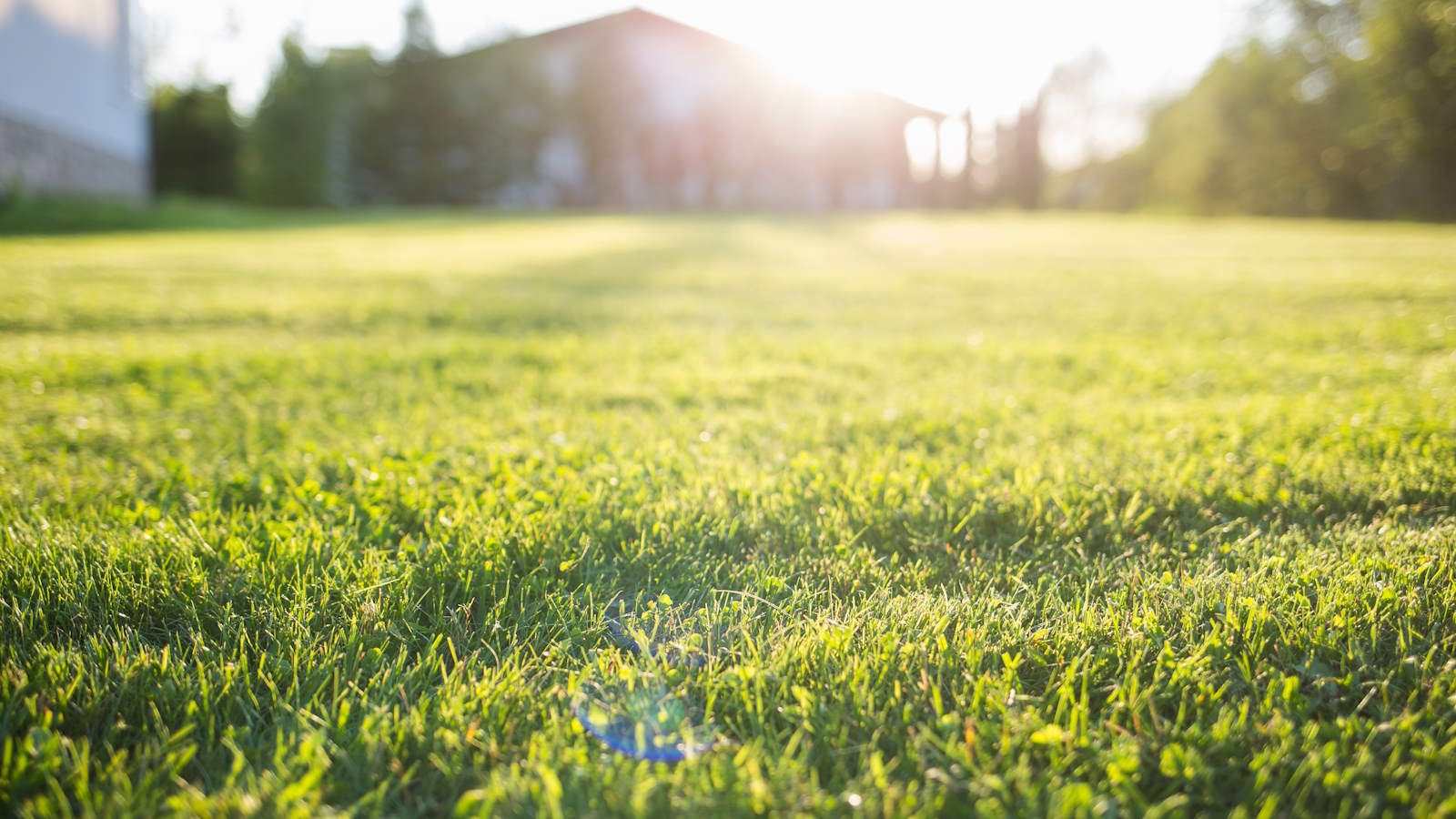
If you ever see a white coating on your lawn, like someone has sprinkled talc or flour all over the grass, then it might be suffering from powdery mildew.
Powdery mildew on lawns is a fairly common fungal problem that affects many types of grass. Thankfully, however, the damage it causes is often only aesthetic and it tends to not result in long-lasting problems for your lawn.
The disease is also fairly simple to prevent and combat, through regular lawn care maintenance that helps to keep any grass healthy and free from the build-up of thatch. To help you spot and deal with powdery mildew on lawns, we hear from experts about how to prevent and eradicate the issue.
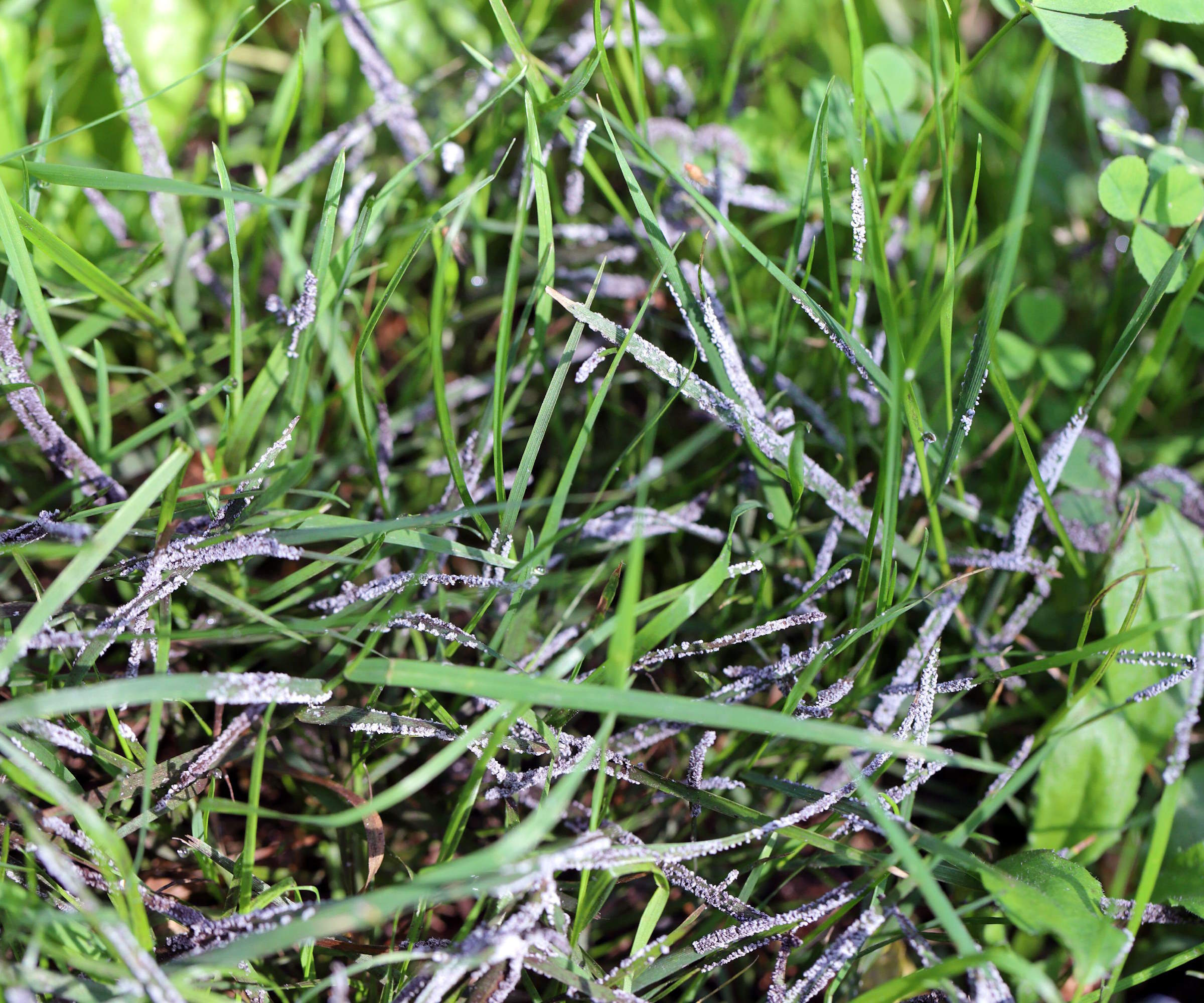
What causes powdery mildew on grass?
Powdery mildew is a fungal issue that develops on the surface of grass blades. It can be the result of many different climatic and maintenance factors and, if left untreated, can stress a lawn and leave it weak. The issue can affect many different types of grass, but Kentucky Bluegrass is the most susceptible cool-season grass.
Signs of powdery mildew on lawns
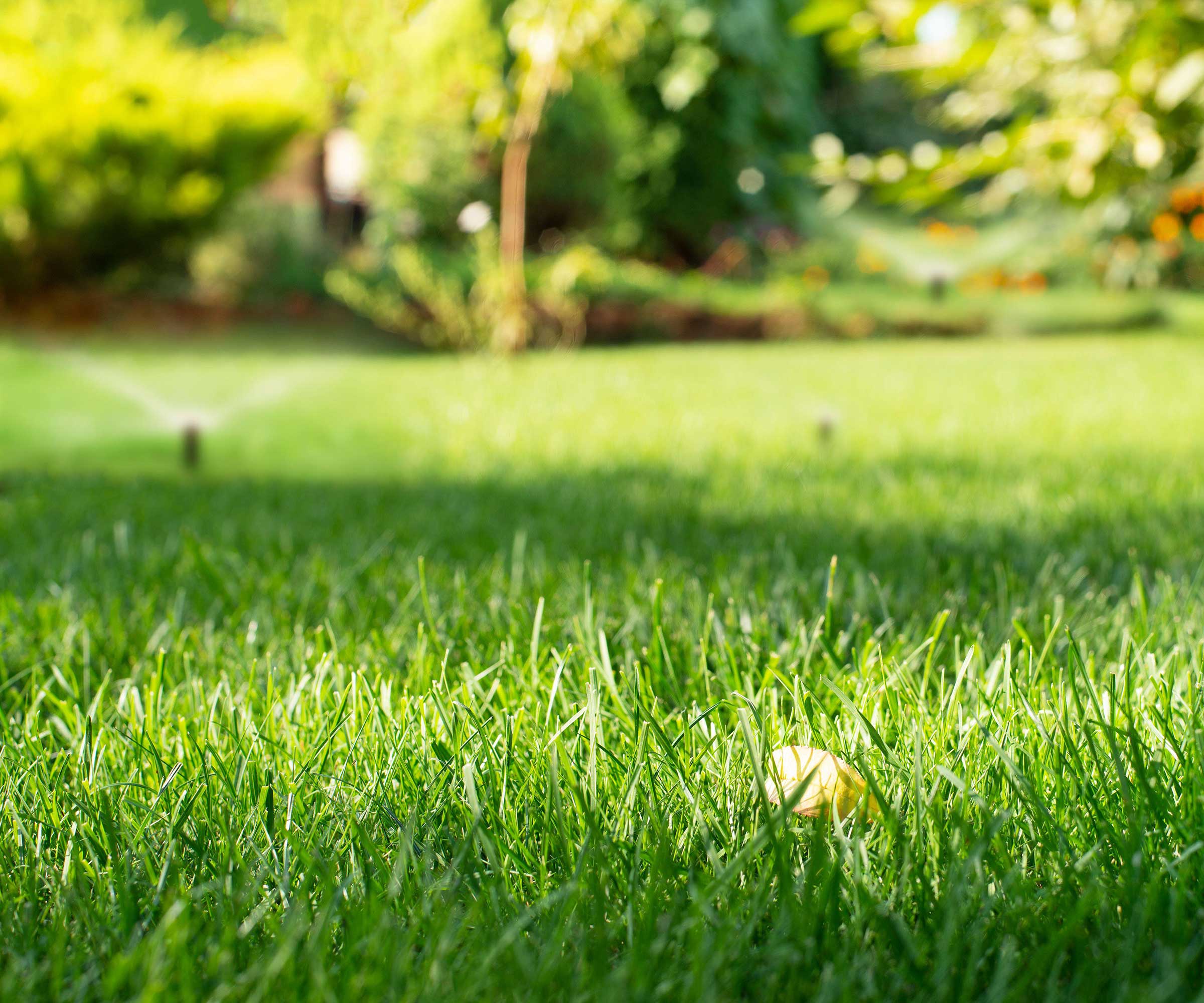
Powdery mildew on lawns is often seen from spring through into fall and is particularly prevalent in shady and humid lawns that have low levels of air circulation, often as a result of poor maintenance.
The signs of powdery mildew should be obvious to spot if your lawn is affected. Rather than a lawn being green and thick, at a glance, you are likely to notice a light, grey-ish cobweb-style covering on your lawn.
Mark Marino, owner and operator for Lawn Phix, claims: ‘Diagnosing powdery mildew is fairly simple – the mycelium of powdery mildew looks like someone dusted flour or talcum powder on the grass blades.’
Powdery mildew starts with this ‘powdery’ sprinkling over the lawn, but as it takes hold the affected area will spread and you can get larger yellow patches in the grass.
How to prevent mildew on lawns
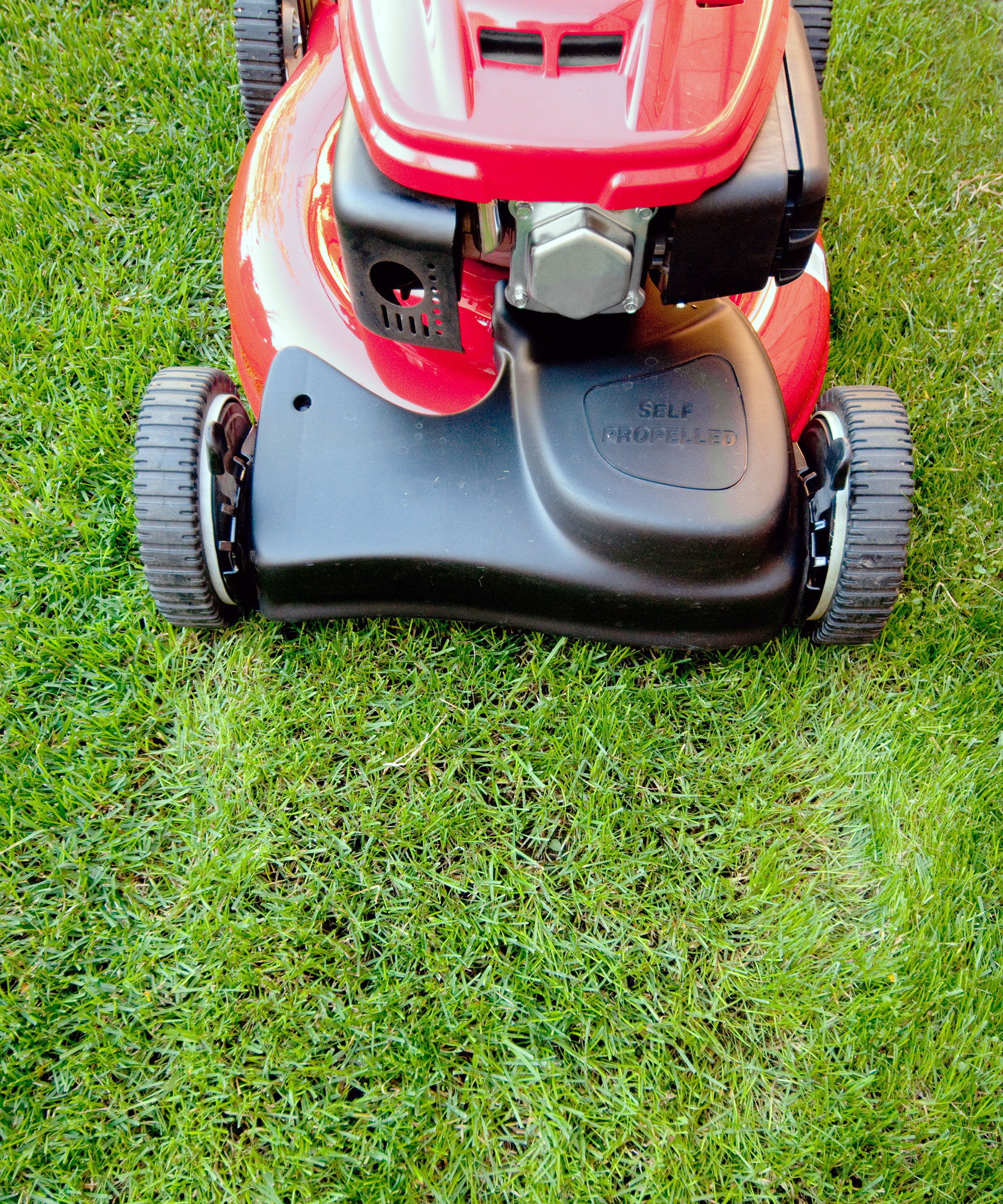
The easiest form of prevention for powdery mildew is proper lawn maintenance. Not caring for a lawn and having a well-rounded maintenance regime is a lawn care mistake that only increases the susceptibility of your grass to many diseases, including dollar spot, lawn rust, mildew, and more.
Jeremy Yamaguchi, CEO of Lawn Love, describes ‘proper maintenance’ as ‘the best way to prevent any lawn disease or fungus’. He adds: ‘Lawn fungus like powdery mildew disease thrives in lawns with poor maintenance conditions, such as excess thatch, incorrect mowing habits, leaf piles, wet grass, excessive mulch, and weak root systems.
‘The healthier your lawn, the more resistant it will be against turfgrass disease.’
As well as regular mowing throughout the season at the correct height, taking time to aerate a lawn and scarify a lawn will keep it healthy and remove excess thatch, to promote more airflow through the grass.
Another good prevention technique is to carefully think about the grass types that make up your lawn. Whether you are sowing grass seed to overseed a lawn or start a new one, Mark Marino recommends: ‘Incorporating and overseeding various species to your lawn – like turf-type tall fescue and perennial ryegrass – is a great way to help prevent powdery mildew.’
A powerful machine that rakes a 12.6" wide path and has adjustable spring tines so you can dethatch at 5 different depths
How to treat powdery mildew on grass
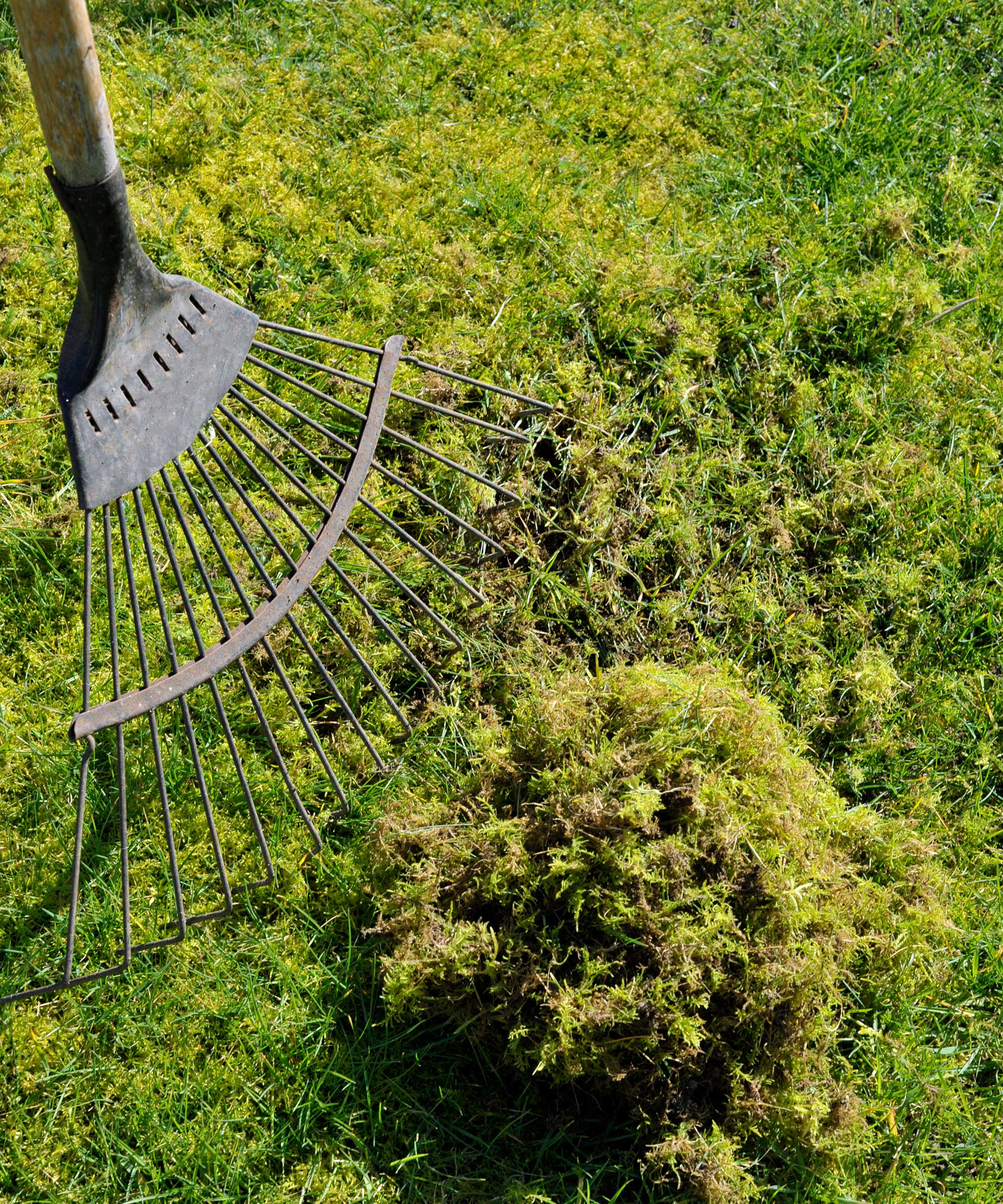
If you do spot powdery mildew, then taking measures to combat the problem can be fairly simple. A focus should be on making changes to the environment to halt the spread of the issue, such as encouraging sunlight and air circulation. This can be done by trimming shrubs and trees that potentially cast shade over the lawn to boost the level of light.
Dethatching the lawn can remove excessive thatch and core aerating can help against compacted soil and increase airflow. Any material from dethatching a lawn with powdery mildew, and also any clippings from mowing infected grass, should be bagged up and put in the trash rather than being used to make compost.
An occurrence of powdery mildew should also encourage you to change your watering regime. This can stop the grass from sitting too wet for long periods, which can cause it to be more susceptible to fungal issues. Water grass early in the morning so it has all day to dry out.
Changing the environment and conducting lawn maintenance tasks such as watering, dethatching, and aerating, will make a positive difference in the health of the grass. A final option is to apply fungicides to get rid of powdery mildew, such as Scotts DiseaseEx lawn fungicide which is available at Amazon.
However, unless changes are made to the environment and lawn care regime the issue is likely to return in the future.
FAQs
Is powdery mildew on grass harmful to dogs?
The good news is that powdery mildew is not going to cause any harm to your pets or children that go onto the lawn. If you do resort to using a fungicide to treat powdery mildew, then you want to keep any pets off the grass for at least 24 hours after the application.
If your lawn does experience bare patches as a result of any pests or disease, then fall and spring are great times to overseed a lawn. Use some fast-growing grass seeds to repair patches and you should quickly get a thick lawn again to enjoy.







